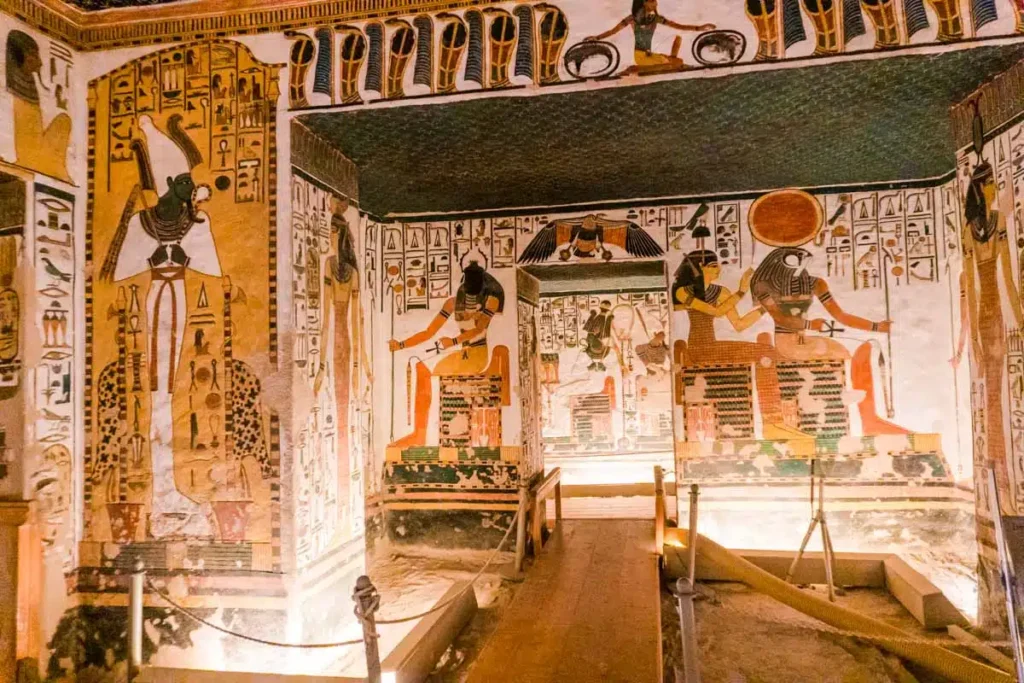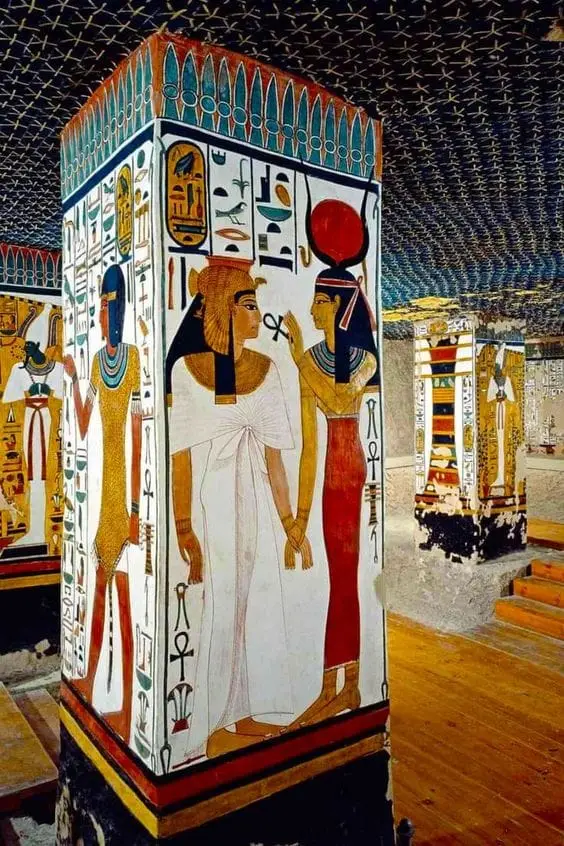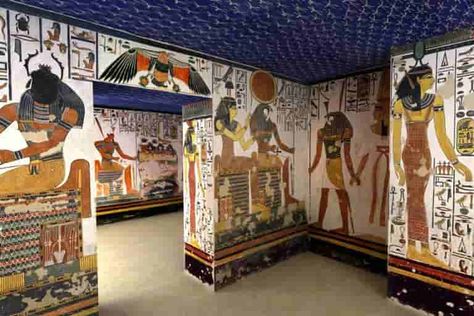The Artwork and Paintings: A Glimpse into the Afterlife
One of the most remarkable aspects of the Tomb of Nefertari is its extraordinary artwork. The tomb is filled with vibrant wall paintings, which are not only beautiful but also provide invaluable insights into ancient Egyptian beliefs about the afterlife. The paintings depict Nefertari in various divine forms, interacting with the gods and goddesses of the Egyptian pantheon, such as Hathor, Isis, and Osiris.
The wall paintings vividly illustrate scenes from the Book of the Dead, the ancient Egyptian funerary text that was meant to guide the deceased through the underworld. In these images, Nefertari is shown performing ritualistic activities, such as offering incense to the gods, receiving the blessings of the gods, and being welcomed into the afterlife. The goddess Hathor, who was associated with music, dance, and joy, is depicted often, emphasizing Nefertari's revered status and her connection to divine beings.
The paintings also depict Nefertari in a variety of regal poses, adorned in elaborate jewelry and fine clothing, signifying her royal status and beauty. The vivid colors used in the artwork, including reds, blues, and golds, were made possible by the advanced techniques and materials used by ancient Egyptian artists. The preservation of these paintings has allowed us to see the artistry of ancient Egypt at its finest.
What stands out in Nefertari's tomb, compared to many other royal tombs, is the intimate portrayal of her. While most tombs focus on the pharaohs, this tomb gives a rare glimpse into the personal world of a queen, showing her interaction with gods and the afterlife in a highly dignified and spiritual manner.








